1992 Ford Mustang 23 Runs 10 Minutes and Stops and Wont Start Until Cold Again
(Updated on April 19, 2022)
Does your car fire right up and immediately die? Perhaps it won't stay running unless your foot is on the gas? Don't fret. There are several simple things you can try that may fix the issue.
Need help with a car problem RIGHT NOW?
to chat online with a verified mechanic who will answer your questions.
Diagnosing a no start or sudden stall condition is often difficult, as there could be many possible causes. This guide is intended to help you narrow down the problem, and possibly even fix the issue yourself.
Common Reasons a Car Starts Then Shuts Off
There are many reasons why your car would start and then stop immediately. If you've attempted to start the vehicle a couple times without success, you should wait a few minutes before trying again. This gives the starter a chance to rest, and may reduce the risk of flooding the engine. You don't want to risk making a small problem worse if the issue ends up being a simple fix.
1) Bad Idle Air Control Valve
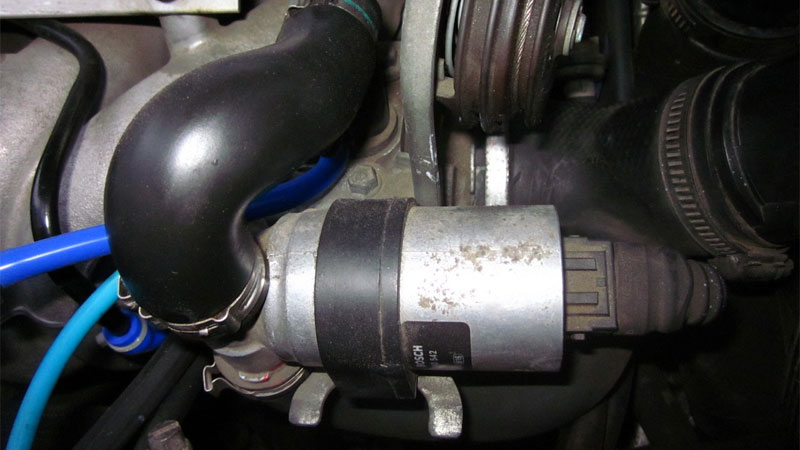
An idle air control valve (IAC) regulates the air fuel mixture of a vehicle at idle. It also manages the idle under changing engine loads, like when you kick on the air conditioning, turn on the headlights, or turn up the radio.
When the idle air control valve malfunctions, you may experience a rough idle or the vehicle may stall entirely. This is especially true on cold starts.
If you have a bad idle air control valve, you can often keep the engine running by giving it gas. This is a very temporary solution, but it could mean the difference from being stranded and getting safely to your destination.
You can try cleaning the idle air control valve to see if it resolves the problem. Sometimes there is an electrical issue inside the idle air control valve that prevents the valve from operating properly.
You can use a multimeter along with a factory manual's wiring diagram to test the idle air control valve. If the root cause is an electrical problem within the idle air control valve itself, you will likely have to replace the IAC.
2) Bad Vacuum Leak

A vacuum leak is a hole in a vehicle's air intake system behind the mass air flow (MAF) sensor that allows unmetered air into the engine. This throws off the expected air fuel ratio and causes the vehicle to run lean (in other words, too much air for the amount of fuel that has been injected).
An excessively lean air-fuel mixture could cause the vehicle to shake when starting, and then die shortly after.
Normally a car will still run with minor vacuum leaks. If the leak is severe, the fuel injectors may not be able to keep up with all the extra unmetered air in the system for a proper burn in the combustion chamber.
You may be able to pop the hood and find something that's noticeably out of place, such as a vacuum line that has torn or disconnected. If you don't have any immediately apparent leaks, you can perform a smoke test to find the exact source of the leak.
During a smoke test, a mechanic pumps smoke into the intake system. This smoke will seep out from any holes in the intake system and tell you very quickly if air is able to enter the intake system where it should not be.
A vehicle that uses a speed-density system for engine management will have a manifold absolute pressure (MAP) sensor instead of a MAF sensor. These vehicles will raise the idle as if the throttle plate were open when they have a vacuum leak, and are unlikely to stall.
3) Dirty or Faulty MAF Sensor
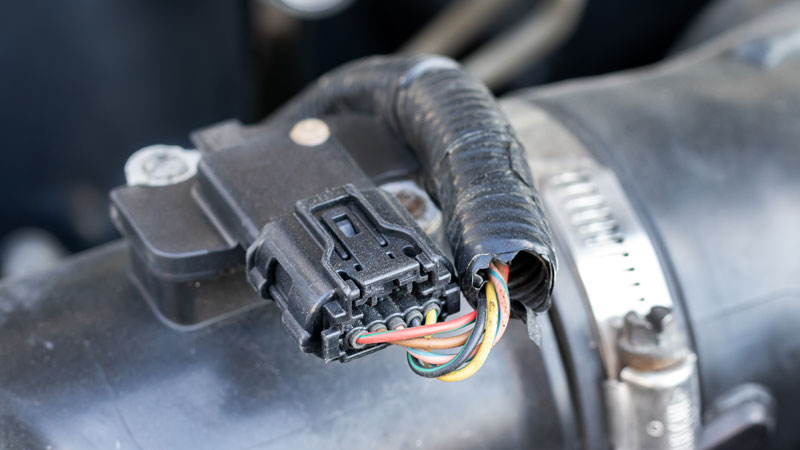
A mass air flow (MAF) sensor is responsible for measuring the amount of air entering the engine on most vehicles. A MAF sensor is very sensitive. Dirt and oil buildup that has blown past the engine air filter can easily foul the sensor. A dirty sensor will often read incorrect air measurements, throwing off the air fuel ratio.
Cleaning this sensor with a dedicated MAF sensor cleaner may solve the issue. If not, test the MAF sensor to see if it's gone bad and replace if necessary.
If you use an aftermarket air intake, make sure you don't apply too much oil on the air filter. Excessive oil may blow past the filter and gum up the MAF sensor.
Note: Only use MAF sensor cleaner to clean a MAF sensor. Do not touch the sensor directly or clean it with other methods.
4) Ignition Issue
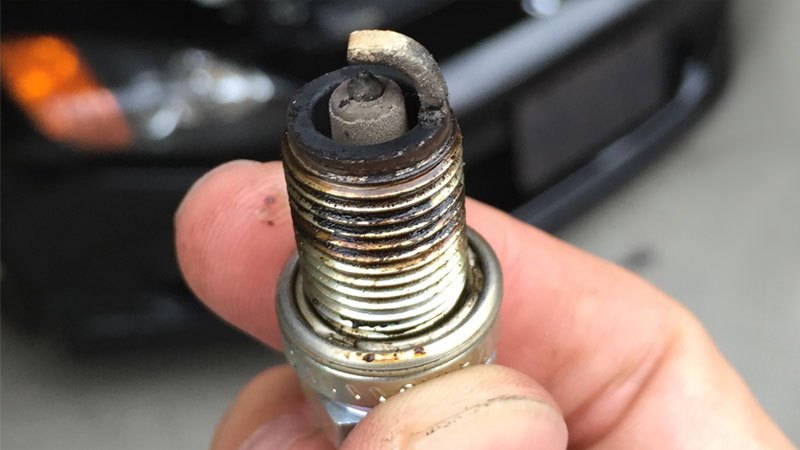
The ignition system is responsible for generating the spark that ignites the mixture of air and fuel in the internal combustion chamber.
If you were to have any issues in your ignition system, like with the spark plugs or even the car battery, then the spark might not be sufficient enough to achieve complete combustion in the combustion chamber. This could cause the car to die, if it starts at all.
Make sure you have a solid connection at the battery with no corrosion on the terminals. If there is excessive corrosion, try cleaning the terminals. A battery terminal cleaner is made specifically for this purpose and makes the job easier.
Check to make sure your spark plug wires or ignition coils are seated properly on each of the spark plugs. A detached or malfunctioning spark plug wire will cause misfires and often a stall as the engine struggles to stay running on fewer cylinders.
Next, check your spark plugs to make sure they look healthy, and replace them if necessary.
5) Bad Camshaft/Crankshaft Position Sensor
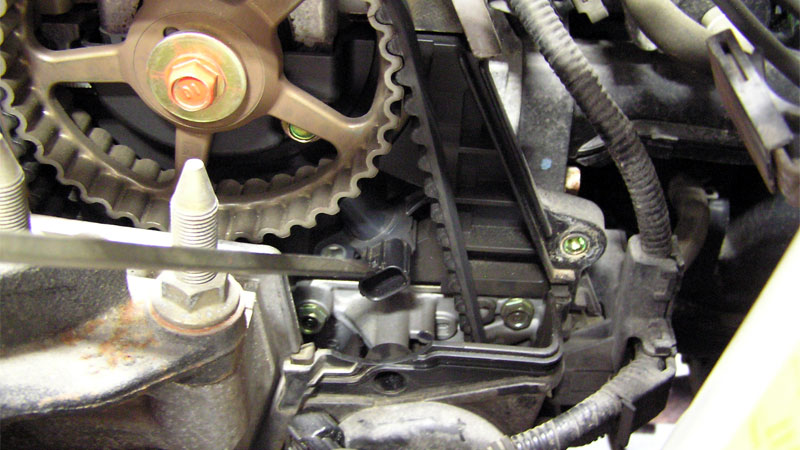
Crankshaft and camshaft position sensors are designed to inform the ECU where the crankshaft and/or camshafts are at all times. This allows the ECU to coordinate the firing of the spark plugs (ignition timing) with the position of the rotating assembly.
If the ECU can't get a clear signal, the engine may fail to start or die immediately after starting.
Your ECU should throw a check engine light if there is no signal from the crankshaft or camshaft position sensors. Get this code read if you can, as it may tell you the exact wire that is causing the issue.
Inspect the connectors on the crankshaft/camshaft position sensors to ensure there is no corrosion or bare metal on the wires, particularly behind the connector on the engine harness side.
On some vehicles, excessive signal noise or interference could cause issues with the crankshaft position sensor. Spark plug wires are a source of electromagnetic interference (EMF), but this is usually only a problem on some aftermarket setups when this interference isn't taken into account.
6) Slipped Timing Belt/Timing Chain
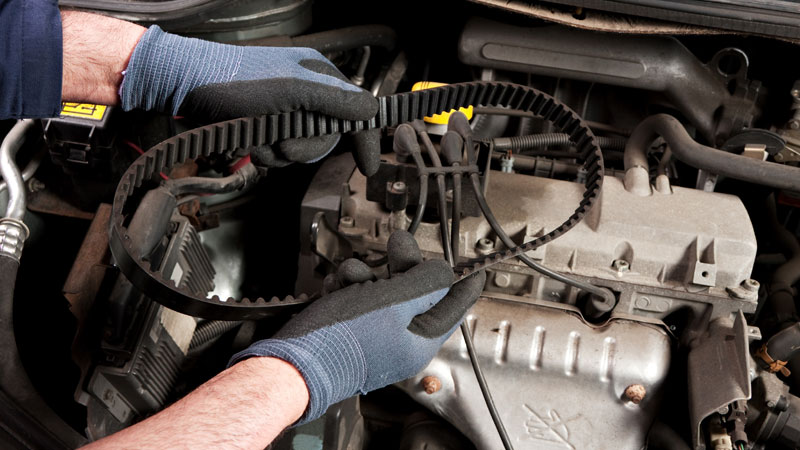
A timing belt or chain that has skipped a tooth will throw off the cam timing, causing the intake and/or exhaust valves to open at the wrong time. Incorrect cam timing may lead to a rough idle, misfires, or a stalled engine.
A skipped tooth could be caused by a belt that was too loose, either due to a failed tensioner or incorrect tensioning procedures during a timing belt replacement.
A camshaft gear that has slipped on the camshaft may exhibit similar symptoms, but is harder to diagnose. This is because a slipped gear will still allow the timing marks to line up, despite the timing being off.
If you know the correct angle of the cam lobes, you will know something is off by the angle of the cam lobes with respect to the cam gear timing marks.
Correcting either of these issues usually requires about as much effort as replacing the timing belt, though some cams are accessible to experienced mechanics without doing the full timing belt teardown.
If your vehicle has an "interference engine", the piston or valves could contact each other if the timing isn't lined up correctly. On these engines, it is imperative to correct the issue as soon as possible to avoid catastrophic engine damage.
7) Fuel Pump Leak
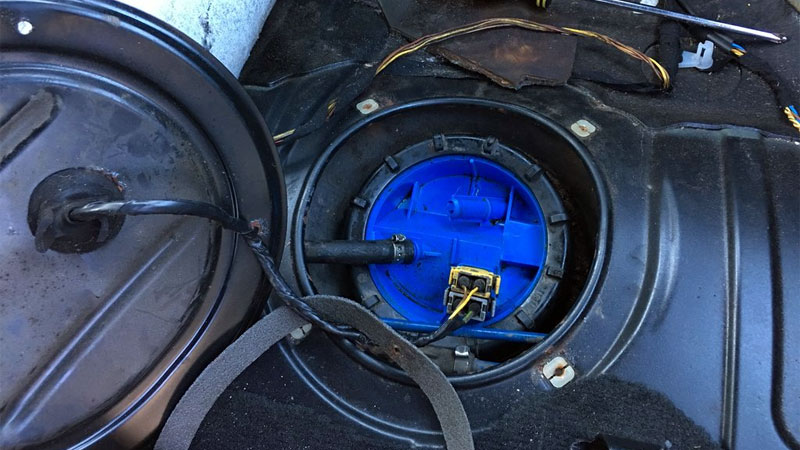
If there is any kind of leak in your fuel pump or fuel injection system, it will create problems for the internal combustion process. The engine requires the right amount of air and fuel to mix together for ignition.
If there is a fuel leak somewhere, then the correct amount of fuel may not make it to the combustion chamber. This might be enough to allow the engine to start, but not keep running.
8) Fuel Injection Sensor Issue
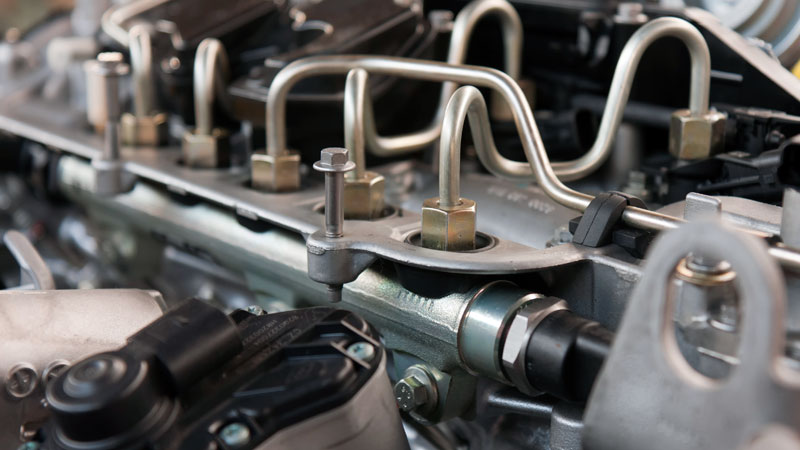
The fuel injectors require a certain amount of pressure so that they can inject the right amount of fuel into the internal combustion chamber. The engine control unit communicates with the fuel injector through the sensor that is attached to it.
The sensor keeps track of the amount of pressure in the fuel injector and then transmits this information to the engine control unit. From there, this computer modifies the pressure accordingly.
However, if there is a problem or issue with the fuel injector sensor, the engine will not receive the right amount of fuel for a proper combustion. This could lead to a starting car that dies right away.
Fuel injectors can also clog, which would affect their spray pattern and ability to inject the correct amount of fuel.
9) Bad Carburetor
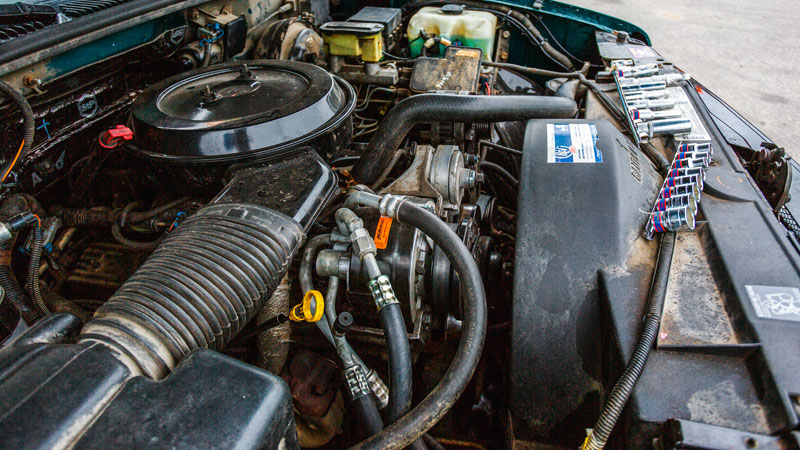
Carburetors are used on older vehicles that do not use electronic fuel injection. They are responsible for properly adjusting the air fuel ratio to achieve efficient combustion.
If you have a bad carburetor that is malfunctioning for some reason, it will likely throw off the ratio of air and fuel.
10) Bad Ground Strap
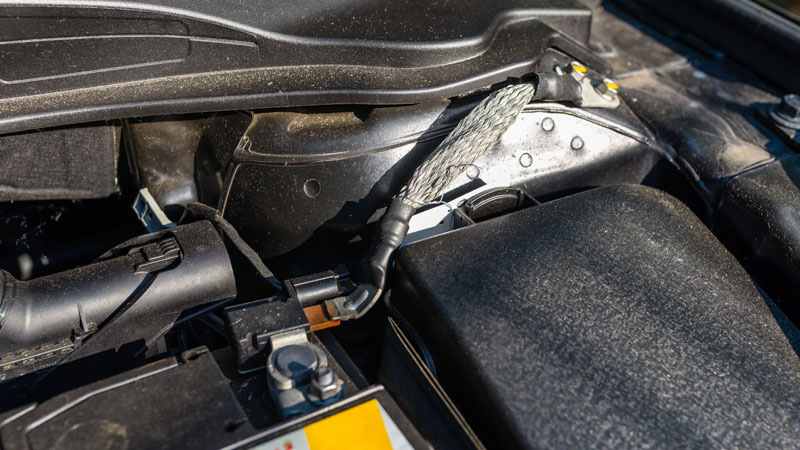
A bad ground strap can cause all sorts of nasty electrical issues. You may experience multiple seemingly unrelated codes. Certain systems may work intermittently or behave erratically. In some cases, your vehicle can stall randomly.
If your car starts, immediately dies, and then the battery light comes on, the battery light may be a symptom, not the cause. Try checking that all major grounds are clean and tight.
Fixing a bad ground is usually very cheap and easy. The difficulty often lies in the electrical diagnostics. An engine wiring diagram and a multimeter will be your best friends if you are trying to locate and replace a bad ground.
11) Engine Control Unit Issue
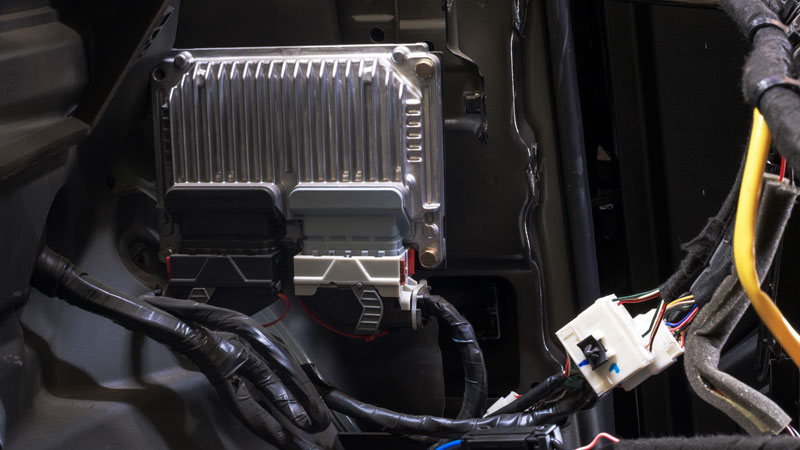
An engine control unit, engine control module, or powertrain control module (ECU, ECM, or PCM respectively) is the computer that manages the main engine parameters and programming for the vehicle.
Although a failing ECU is far less common than a problem with the wiring harness or a ground strap, it is possible for the ECU to malfunction and cause a stall. Generally, an ECU failure will be accompanied with several electrical systems malfunctions, such as missing or invalid sensor readings.
One potential problem that could arise is the inability to control the fuel injection system correctly. This might cause problems keeping the car running after you start it up.
Conclusion
There are many possible causes for a stall immediately after startup. However, it is possible to narrow down the problem to a single component or system to ease the diagnostic process.
While troubleshooting yourself, it helps to have a repair manual or online forum handy for your specific make and model. Some vehicles are more prone to certain issues, and forums contain good information for pinpointing these.
If you do not feel confident in your ability to diagnose the stall yourself, have the vehicle towed to a mechanic you trust for a proper diagnosis and repair.
Source: https://oards.com/causes-of-a-car-starts-then-dies-immediately/
0 Response to "1992 Ford Mustang 23 Runs 10 Minutes and Stops and Wont Start Until Cold Again"
Post a Comment